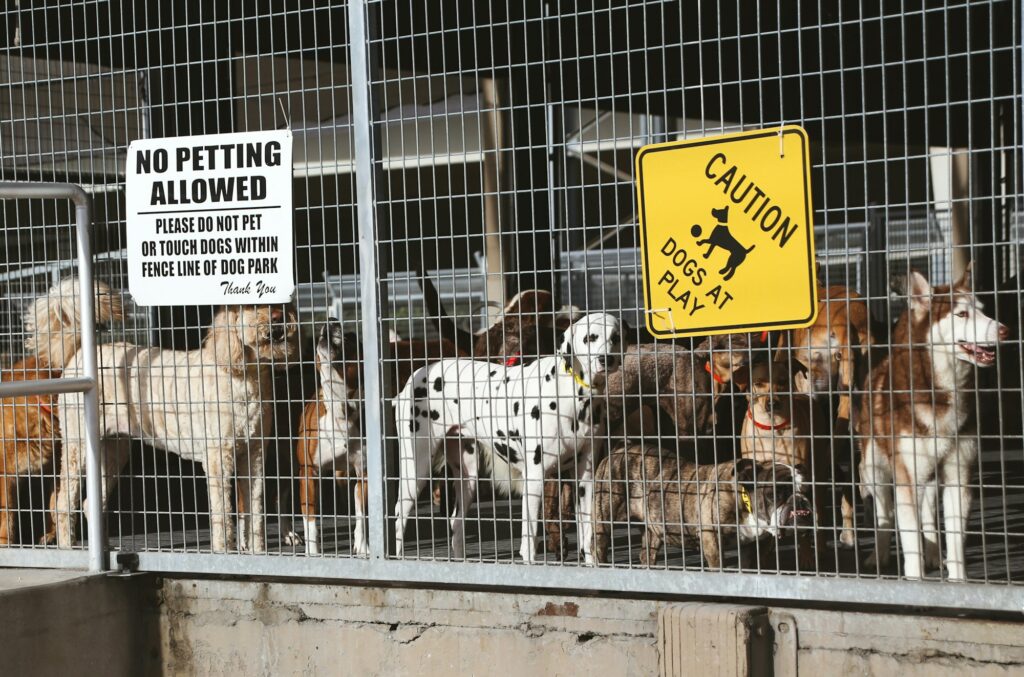Living in a state as vast and culturally diverse as California brings a responsibility to protect all its inhabitants, including the animals. Reporting animal abuse in California is a critical aspect of this duty. However, the process can sometimes be daunting due to the sheer size and diversity of the state. This guide is here to help you navigate through these challenges. It aims to simplify the process, providing a detailed step-by-step approach and equipping you with the necessary resources to ensure your report of animal abuse is handled correctly and effectively. Your alertness and vigilance can make a world of difference in the lives of animals suffering from abuse or neglect. Let’s make California a safer place for all creatures, one report at a time.
Understanding What Animal Abuse in California is
The pivotal first step in reporting animal abuse in California is to gain a comprehensive understanding of what animal abuse truly entails. Animal abuse is a broad term that extends beyond the mere physical assault of an animal. It also encapsulates instances of neglect and lack of care, which might be less overt but are equally harmful. It is essential to educate oneself about the manifold ways animals can be subjected to mistreatment. This knowledge equips you to accurately identify and report instances of abuse when they occur. Abuse can manifest in a spectrum of ways, ranging from unmistakable signs of violence to more insidious forms of neglect, such as failing to provide an animal with necessary sustenance like food and water or not providing adequate shelter. Understanding the complexity and breadth of animal abuse in California is crucial, as it forms the foundation for effective reporting. Remember, your alertness and vigilance can potentially save an animal’s life by bringing the abuse to light.
Different Types of Animal Abuse in California That You May Encounter
Before diving into the specifics, it’s important to understand the different categories of animal abuse in California that you may encounter. While not an exhaustive list, these are some of the most common types of abuse you might encounter. Recognizing these types of abuse is the first step towards effectively reporting them.
Animal Hoarding

Animal hoarding is a form of abuse characterized by accumulating an excessive number of animals, exceeding the owner’s ability to provide proper care. This often results in severe neglect, with animals suffering from malnutrition, untreated medical conditions, and a lack of basic necessities such as clean water and adequate shelter.
The hoarder, often suffering from mental health issues, may not recognize the harm they are causing. Animal hoarding is a serious issue that requires immediate intervention, not only for the welfare of the animals but also for the hoarder’s health and safety.
Dogfighting and Organized Cruelty
Dogfighting and Organized Cruelty is another prevalent form of animal abuse in California. This gruesome activity often involves the training of dogs to fight one another for the amusement of onlookers and for gambling purposes. These animals are typically kept in deplorable conditions and are subjected to harsh and cruel training practices to make them more aggressive. The fights themselves are incredibly violent, often leading to severe injuries or even death for the animals involved. Similarly, organized cruelty can also involve other forms of forced animal fighting or even deliberate, systematic harm towards animals. Reporting these instances is crucial as they are illegal and cause immense suffering for the animals involved.
Inadequate Shelter
Inadequate shelter is another form of animal abuse in California that is often seen. This involves failing to provide animals with suitable protection from the elements. This could mean leaving a pet out in the sun without any shade or protection, leaving them outside during extreme temperatures, or not providing them with a dry, warm place to sleep during cold or rainy weather. Shelter is a basic necessity for animals and not providing appropriate shelter can put their health and lives at risk. Whether it’s a dog left chained outside in the freezing cold or a cat trapped in an attic during a heatwave, these instances of inadequate shelter constitute abuse and should be reported.
Pet Abandonment
One of the most heartbreaking forms of animal abuse in California is pet abandonment. This cruel act happens when pet owners irresponsibly leave their pets unattended, often due to financial constraints, relocation to residency where pets are not permitted, or other personal reasons. These forsaken pets, most often domesticated animals, are ill-prepared to survive on their own in the wild. The consequences of abandonment are dire and can include malnutrition, exposure to severe weather, susceptibility to accidents, and other hazards. Beyond the physical toll, abandonment also causes significant psychological trauma as pets are suddenly devoid of the care and companionship they have grown used to. It is of utmost importance to report cases of pet abandonment so that immediate and appropriate measures can be taken to rescue and protect these animals.
Lack of Veterinary Care
Lack of veterinary care is yet another type of animal abuse in California that often goes unnoticed. This form of neglect involves failing to provide necessary medical attention to an animal when they are injured or ill. This can lead to prolonged suffering for the animal, potentially resulting in severe complications or even death. Examples include not seeking treatment for visible injuries, failure to administer prescribed medication, or lack of preventative care such as vaccinations and flea treatments. This form of animal abuse in California can be particularly insidious, as it may not be immediately visible to the casual observer. However, a pet with untreated medical conditions or recurring health problems can be a sign of this type of neglect and should be reported.
Leaving Your Pet in the Car
Leaving your pet in the car is an extremely dangerous form of animal abuse in California that occurs too frequently. This typically involves leaving a pet inside a parked vehicle for extended periods, often leading to extreme temperatures inside the car that can cause heatstroke and even death. Even on seemingly mild days, the temperature inside a vehicle can quickly escalate to dangerous levels. It is important to remember that cracking windows does not significantly reduce the heat inside a parked car. If you see a pet left alone inside a vehicle, particularly on a hot day, it is crucial to report this immediately to prevent potential life-threatening harm to the pet.
Beating and Physical Abuse
Beating and physical abuse is one of the most overt forms of animal cruelty, and it is, unfortunately, quite prevalent. This form of abuse involves directly inflicting pain or injury on an animal, often through hitting, kicking, or using objects to cause harm.

Physical abuse can lead to severe injuries, long-term physical ailments, and psychological trauma. The physical signs of such abuse can include wounds, fractures, burns, hair loss, and signs of malnourishment. Animals subjected to this type of abuse may also exhibit behavioral changes such as fearfulness, aggression, or depression. It’s important to note that physical abuse is not only illegal but also morally reprehensible.
Signs of Animal Abuse in California
Now that you are familiar with the different types of animal abuse, it is equally important to understand the signs of animal abuse. Recognizing these signs is crucial as it enables you to promptly report any suspicions of abuse, potentially saving an animal’s life. The signs of animal abuse can be physical or environmental and sometimes even behavioral. It’s important to pay close attention and report any signs that may indicate an animal is being neglected or mistreated.
Physical Signs
Physical signs of animal abuse in California can be diverse and may include visible injuries such as cuts, bruises, burns, or fractures. Unexplained or recurring injuries, weight loss, and signs of malnutrition, such as a visible ribcage or hip bones, are also red flags. You might also notice skin conditions like severe fleas or ticks, hair loss, or untreated wounds. Overgrown nails or fur that is matted and dirty can indicate neglect. Other signs could be difficulty walking or standing, signs of confinement such as heavy chains or tight collars, or the presence of parasites. It’s important to note that these signs may indicate abuse and warrant further investigation.
Environmental Signs
Environmental signs of animal abuse in California are another crucial aspect to consider. Often, the conditions in which an animal is kept can indicate neglect or mistreatment. These signs can include inadequate shelter, such as lack of protection from weather extremes, dirty or unsanitary living conditions, and lack of clean water or food. Overcrowding or hoarding, where an excessive number of animals are kept in a confined space, is another environmental sign of abuse. Similarly, animals left alone for extended periods without care or supervision, or those who are consistently chained or confined in small spaces, are likely victims of abuse. It’s critical to keep an eye out for these signs and report them to the relevant authorities immediately.
Behavioral Signs

Behavioral signs of animal abuse can be quite telling and should not be overlooked. Animals experiencing abuse may exhibit unusual behaviors such as excessive fear, aggression, or even depression. They might show signs of anxiety, such as constant pacing, cowering, or attempts to hide.
They may also be unusually skittish or wary, especially around humans. Other signs can include sudden changes in behavior, such as a previously friendly pet becoming withdrawn or aggressive. In some cases, animals may show signs of severe distress, such as self-harming behaviors or unusual vocalizations. It is essential to take note of these signs as they often indicate an animal is suffering and needs help.
Reporting Animal Abuse in California
Reporting animal abuse in California is both a societal responsibility and a moral imperative. If you ever find yourself in a situation where you witness or suspect animal abuse, it is absolutely crucial that you take immediate action. You can report the incident to several authorities, such as your local animal control agency, your local police department, or the Humane Society of the United States. When reporting, try to provide as much information as possible. This can include the nature and severity of the abuse, the specific location, and any identifiable descriptions of the people or animals involved.
Remember, even if you are unsure, it is better to report. You are not required to give your name while reporting animal abuse in California, and your report can be made anonymously, ensuring your privacy. Animal cruelty is a serious crime, and in many cases, you may be the only chance for these animals to escape the torment they are enduring.
It’s also imperative to understand that your role doesn’t end even after reporting the animal abuse in California you have seen. Stay alert, follow up, and continue to advocate for stronger laws and stricter enforcement against those who commit these heinous acts. Your vigilance, courage, and determination can make a profound difference in the life of an animal in need and the collective welfare of all animals in California. Together, we can strive to create a safer, more compassionate world for every creature that shares our beautiful state.
